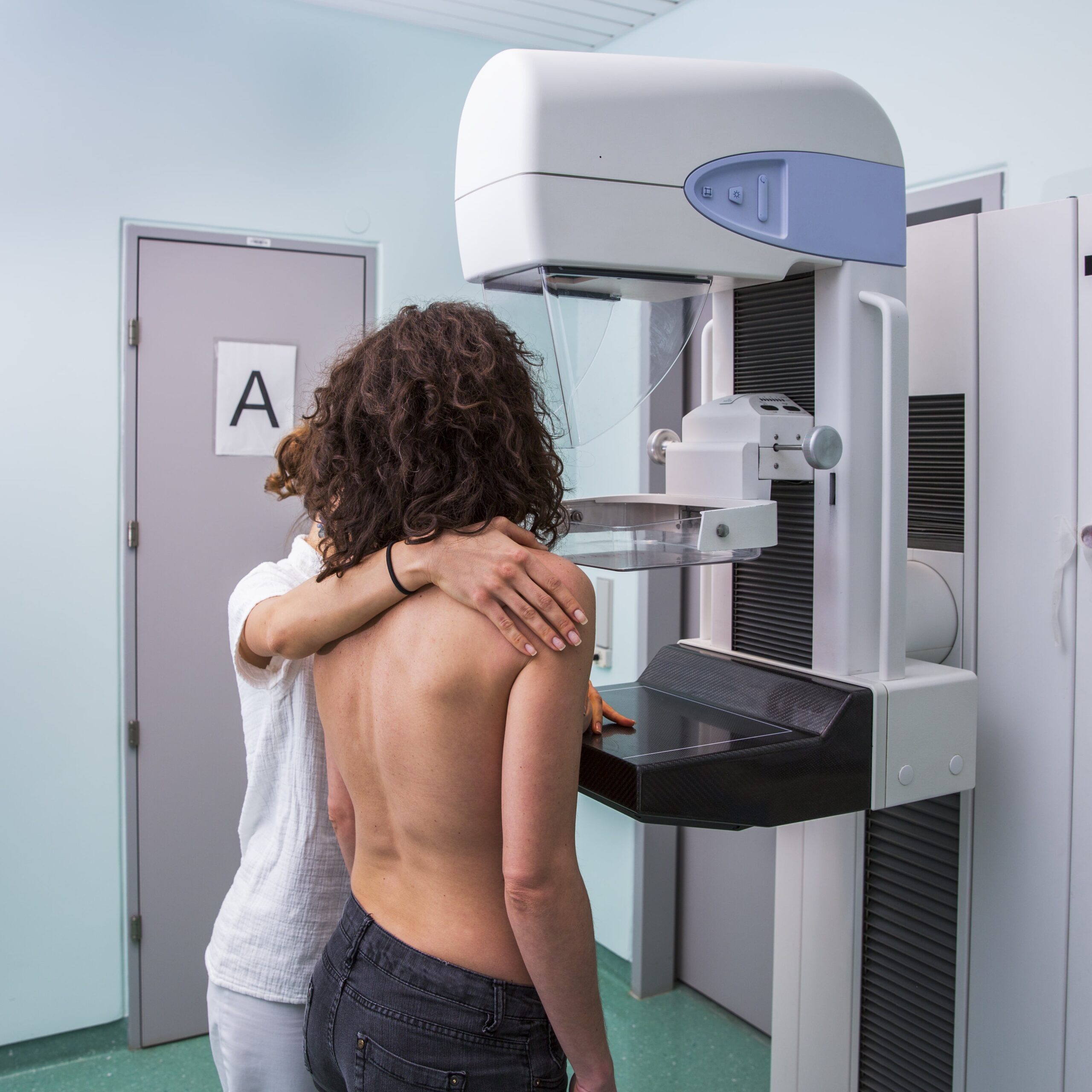
- POPSUGAR Australia
- Fitness
- What Does an Abnormal Mammogram Mean?
What Does an Abnormal Mammogram Mean?

Mammograms are a critical part of your reproductive care and overall health and wellness. After all, breast cancer is the second most common cancer in women in the United States and is responsible for about 30 percent of all new female cancers each year, according to the American Cancer Society. And while the mammogram itself isn’t necessarily fun, an irregular result can cause a spiral of negative emotions. But don’t panic! An abnormal mammogram isn’t always a cause for concern.
First things first. A mammogram is an X-ray image of the breasts, says Staci Tanouye, MD, FACOG, an ob-gyn in Jacksonville, FL. “Mammograms are necessary and important because screening mammograms are our best tool for early detection of breast cancer in asymptomatic people,” she explains. On top of that, diagnostic mammograms are helpful in the examination of abnormal findings such as breast lumps and persistent breast pain, she adds.
Now, the thought of getting an abnormal mammogram can be scary, triggering thoughts of a worst-case scenario. But it’s not always a major cause for concern. “Many times, an abnormal mammogram means that [doctors] need clearer images,” Dr. Tanouye says. “Less than one out of 10 abnormal screening mammograms are due to breast cancer,” she explains.
So, what does it mean if you have an abnormal mammogram? And what happens after abnormal mammogram results? Here’s what experts told POPSUGAR.
What Does an Abnormal Mammogram Mean?
An abnormal mammogram can mean a lot of things, but at its core, it means a radiologist (the doctor who reviews the mammogram) sees an irregularity on the image that warrants further evaluation, Dr. Tanouye says. For example, there could be a change from a previous mammogram, an asymmetrical area of the breasts, a noncancerous mass or cyst, or an area suspicious for cancer, she explains.
In fact, many women are called back to repeat the X-ray, says Tamara Guichard, MD, a board-certified gynecologist at Elite Gynecology. “Many times, the breast tissue may be dense due to fatty tissue or inflammation, making it difficult to see other surrounding structures of the breast such as the ducts, glands, lymph nodes, blood vessels, ligaments, muscles, or the rib cage,” she explains. In these cases, you may be recalled for a follow-up exam or mammogram redo.
The Most Common Reasons For Being Recalled After a Mammogram
“Most mammograms which are called ‘abnormal’ turn out to be nothing important,” says William Audeh, MD, MS, a medical oncologist specializing in breast cancer and chief medical officer at Agendia, a molecular diagnostics company focused solely on breast cancer. Still, getting recalled after a mammogram can be pretty scary. Here are some of the most common reasons:
- The picture shows an unclear image or irregularity: One of the most common reasons to be recalled for additional imaging is the mammogram showed an asymmetrical area or an area that is unclear and needs further viewing, Dr. Tanouye says. “This can happen more often with dense breast tissue, which affects up to 40 percent of people getting mammograms,” she explains.
- The X-ray shows a mass or cyst: In these cases, additional testing like an ultrasound or MRI is done to clearly define the borders of the mass or cyst and determine whether it’s benign or a potential cancerous growth, Dr. Guichard says.
If this is your first mammogram or your first mammogram after breast reconstruction surgery, you may also get called back for a diagnostic breast image since there is no prior X-ray to compare, Dr. Tanouye adds.
It’s also worth noting that abnormal mammograms can include pertinent information regarding the lymph nodes of the axillary region under your arm, Dr. Guichard says. “This area drains the breast of toxins or other abnormalities such as viruses, inflammatory processes, or bacterial infections,” she explains. In most cases, this is benign, but if you notice changes in your underarm lymph nodes such as pain, tenderness, or inflammation, visit your doctor for further evaluation, per the Mayo Clinic.
What Happens After Abnormal Mammogram Results?
Most women are notified of abnormal mammogram results by their primary physician, gynecologist, or radiologist. From there, you’ll likely schedule a diagnostic mammogram of the affected side and possibly a breast ultrasound, Dr. Tanouye says. “Diagnostic mammograms are a more in-depth X-ray image with more angles and views than a screening mammogram, and in a breast ultrasound, a technician uses an external ultrasound probe that emits sound waves, with no radiation, to target the specific area of concern,” she explains.
Your doctor may also recommend more frequent monitoring and suggest another mammogram in six months, instead of waiting another year, to see if the area stays the same or continues to change, Dr. Audeh says.
Once the abnormal area is identified, your doctor may perform a biopsy for further testing or surgically remove a cyst, depending on your symptoms and risk factors, Dr. Guichard adds.
Finally, remember that an abnormal mammogram is not always a cause for concern, Dr. Audeh stresses. “Most mammograms which are called ‘abnormal’ do not turn out to be an issue or a health problem but may require more frequent monitoring for a time, to be sure,” he explains. “No test is perfect, but the mammogram has been proven to be the best way to screen the majority of women for breast cancer, and it has saved countless lives.”


